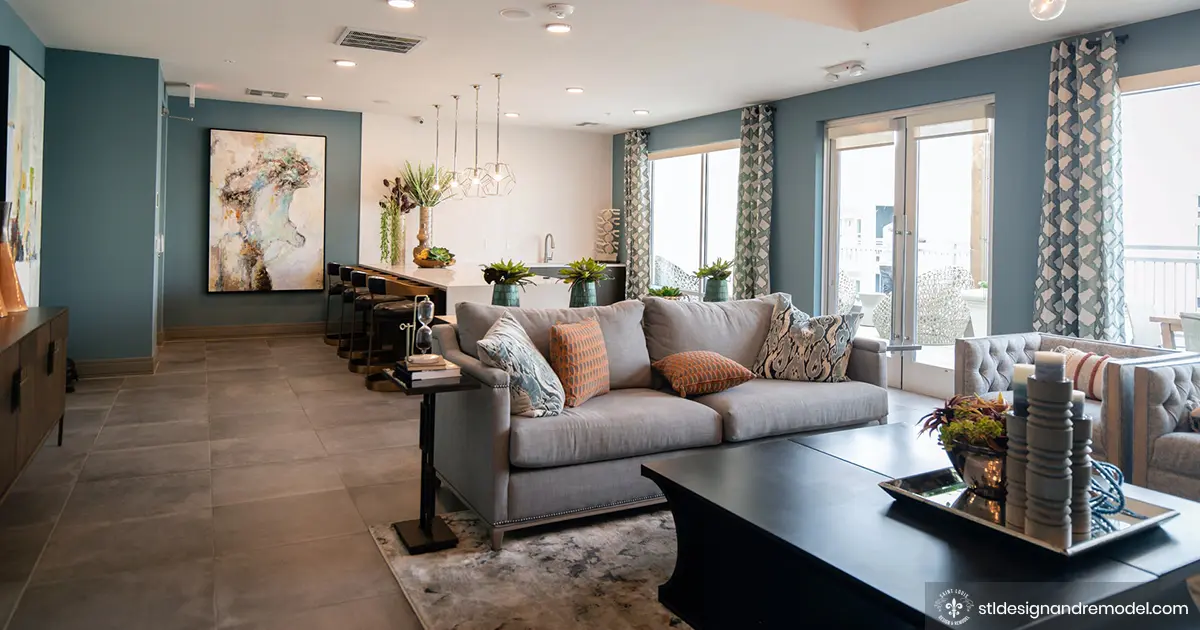Warm and Cool Paint Colors: Interior Design Tips

When it comes to interior design, the color wheel can be very useful. In fact, it serves as a foundation on which interior designs are built. For this reason, lack of proper knowledge of interior design or art, can lead to a room design that looks overwhelming.
Given these points, as you design your home, there are simple principles to keep in mind. Having an understanding of warm and cool paint colors is one of these principles. Having a basic understanding of colors is a necessity when it comes to interior design. Else you could end up with the wrong carpet or vinyl flooring in an upscale house. So, regardless of the type of house or its cost, design details are important.
Read on for design details to help make your home beautiful and inviting.
Using Warm and Cool Paint Colors In Your Home
So, what’s the difference between warm and cool paint colors? Warm colors are playful and vibrant, while cool colors are refreshing, tranquil, and calming. When designing a home, it’s important to think about the purpose of the room.
Cool colors are great in spaces for relaxation, such as bathrooms and bedrooms. And warm colors are more ideal for social areas like dining rooms and kitchens. Here’s a simple breakdown of the two types of colors.
- Warm colors: Tan, brown, being, gold, orange, yellow, red, creamy neutrals.
- Cool Colors: Deep purple, gray, dark green, slate, blue.
Where Does Black and White Colors Fit In?
Both black and white are highly popular colors in interior decorating. As such, they play key roles in helping you achieve warmth or coolness in a room. And each can balance out a room with other colors. On the other hand, if black or white is overused, it can turn into a non-cozy space.
How To Make Both Warm and Cool Colors Work in Your Home
Here are some quick tips for making both colors spectrums work in your home.
- Primary Focal Points – The primary focal points of a room should remain within the same color palette. It’s okay to use warm and color paint colors in a room as long as the alternating palette is used for accents. So, when choosing colors for a room, always consider the big picture.
- Room Size – Cool colors are generally used in small rooms, where as warm colors are often used in larger ones. For these reasons, it’s important to consider the purpose of the room and how color and size play off of each other.
- The 80/20 Rule – When it comes to using color in your home, the general rule of thumb is to use color as an accent. Hence, the 80/20 rule which basically means that 80% of a room is composed of neutral colors, while 20% is composed of cool or warm colors. Using this rule ensures that you don’t overdo the room, and instead keep a good balance.
- Balance – Speaking of balance, it’s important not to use warm and cool paint colors in a half and half effort. Instead, use textures, shades, and tints within eighteen a warm or cool palette to add variation. For example, in the photo above, blue (cool color) is used for the molding and window treatments. Creamy neutrals (warm) is used for the wall color, as well as some of the molding.
- Things You’re Not Changing – It’s also important to take note of things already in a room that you don’t plan on changing, such as the flooring. If you have cool carpeting in the dining room, for instance, you’re going to want to go with cool colors. And if you’re using bright tile in the master bathroom then you should stick with warms colors. Then again, if you are doing a complete home remodeling, you can rethink the entire room.
Call St. Louis Design & Remodel Today
As a top home remodeling company in St. Louis, we have tackled hundreds of home renovation projects. Call us today at (314) 782-5700 or book appointment online.
